You have no items in your shopping cart.
Wine Jura
Among the smallest wine regions in France, the Jura is also probably the most original. Relying on thousand-year-old know-how, it is today a great name in the world of viticulture. The Jura vineyards are demanding due to their geology and climate. The winegrowers have been able to adapt to offer a wide variety of wines with a unique character. Read more on Jura
-
Top Selling
-
Top Selling
-
Top Selling
- -11%
- -30%
- -17%
- -17%
- -17%
Region Jura
The Jura is a wine region full of diversity
The wine region of Jura offers atypical and very divergent wines with its own specialities such as the vin de paille for example. On the edge of Burgundy, this wine-growing area is nearly 80 kilometres long and 1814 hectares in size and crosses the entire Jura department from north to south. There are 200 winegrowers in the area. Small in size but big in heart, it is home to passionate winemakers who want to restore the wines of the Jura to their full nobility.
This region produces fairly tannic red and rosé wines as well as a crémant, but its great speciality is the white wine. With five grape varieties present on this territory, the Jura offers seven Appellations d'Origine Contrôlée (A.O.C.) and four Appellations d'Origine Protégée (A.O.P.). The local speciality remains the vin de paille. It is a very particular wine whose name comes from its manufacture. Indeed, it is a wine obtained by pressing and fermentation of passerillé grapes formerly on straw trellises but today on wooden racks or even in specialized rooms. Vin de paille is an amber wine created without the addition of alcohol which can be sweet or syrupy depending on the grape variety used.
White wines are also very typical wines of the Jura region. There are two kinds: the subtle white wines with accents of white flowers and the more dry and powerful white wines.
What is Jura yellow wine?
The third specificity of the Jura is the "yellow wine". It is the Savagnin grape variety that creates this wine. Its characteristic is that it is kept in oak casks for at least six years and three months, without the winemaker being able to intervene during this process. This reveals a wine with notes of nuts, almonds and spices.
Wine production appeared in the Jura as early as antiquity
The Vin du Jura was already referenced at the time by Pliny the Younger, a Roman senator. In the Middle Ages, Jura wines were very famous and considered noble. They were found at the tables of the greatest Lords and Kings. Unfortunately, in modern times, the Ten Years' War ravaged the vineyards. But the winegrowers gradually repaired the damage to recreate a rich vineyard in a few years.
In the 19th century, the Jura counted 20,000 hectares of vines which were ravaged by phylloxera from 1879 and for about 15 years. It was a Jura ampelographer, Alexis Millardet, who, at the end of the 19th century, succeeded in creating hybrid grape varieties resistant to this devastating insect. 2000 hectares of vines from these new grape varieties were then replanted.
In 1926, Château-Chalon was one of the five best white wines in the world. The region obtained its first A.O.C. in 1936 and 1937. Nowadays, the development of green and eco-responsible tourism favours the knowledge of Jura wines and their very particular characteristics.
Characteristics of the Jura vineyards and wines
The vineyards of the Jura flourish on a rather uneven geology and at different altitudes. Between plains and mountains, the vineyards grow on diverse soils. We find soils of marl, clay and limestone which give the wines a very strong typicity.
Between 250m and 400m altitude, we find the hillsides that give the most tasty wines. Between local and Burgundian grape varieties, these areas give birth to the vin de paille and vin jaune, very characteristic of the region. The climate of the Jura is continental and quite harsh. The winters are very cold and dry and the summers rather irregular but quite hot. It is thanks to this climate that the wines will have character.
In this region, the vendange can take place until November depending on the different precocity of the grape varieties. The geological and climatic characteristics of the Jura give rise to unique and highly aromatic wines.
The grape varieties of the Jura
The Jura highlights 5 very characteristic grape varieties: Chardonnay (48% of the vineyard), Pinot Noir (11%), Poulsard (18%), Savagnin (17%) and Trousseau (5%).
Chardonnay
Chardonnay is the most widespread grape variety in the region. Originally from Burgundy, it has adapted perfectly to the Jurassic soils. The white wines made from this grape are very floral with citrus and peach aromas. In combination with Savagnin, it offers wines with hazelnut and almond accents.Pinot Noir
The Pinot Noir is the Jura grape variety richest in phenolic compounds, which gives the wines a very pronounced taste. Wines made from Pinot Noir are intensely coloured red wines, with aromas of undergrowth, cherry and wild fruit.Poulsard
The Poulsard is an indigenous grape variety. It is the most widespread after Chardonnay. Its black grapes with blue reflections are fine and juicy. It creates red wines with a pale ruby colour, which are greedy and with red berry notes.Savagnin
The Savagnin is a typical Jura grape variety that requires patience and demand as it ripens slowly. However, it is appreciated by winemakers because it is very resistant. It is rich in alcohol and acidity. Ideal for training under veil, it is a grape variety that gives powerful white wines with diverse aromas mixing spices, almonds and fruits. It is also found wilted, which gives the wines aromas of lemon and white flowers.The Trousseau
The Trousseau is a late grape variety with small clusters. It requires gravelly, warm soils. It offers full-bodied wines with a purplish colour and peppery aromas with red fruit accents.Jura appellations
The Arbois appellation
The AOC Arbois provides white, rosé and red wines. Produced in the north of the Jura, around the town of the same name, it is known for its yellow wines and straw wines.Yellow wines are made from the Savagnin grape. The vins de paille are made from red and white grapes harvested very early. Both wines are very distinctive. To the eye, the Arbois red wine has a very light colour, which can be mistaken for a rosé. The white wine, on the other hand, is golden with green reflections. As its name suggests, the vin de paille has a yellow, ochre colour.In terms of smell, one will delight in a scent of red fruits for the red and rosé wines and notes of nuts and apples for the white. On the palate, we will find the fruity touches for the reds and rosés which are light wines with little tannin. The Arbois white will leave us with aromas of nuts and orange peel in a long mouthfeel. The wines of Arbois go very well with fish and poultry.
The Château-Chalon appellation
Located on the plateaus of the Jura, Château-Chalon is a prestigious appellation. It is produced in only four towns, namely Château-Chalon, Menétru-le-Vignoble, Nevy-sur-Seille and Domblans. This appellation offers only yellow wine, but of a rare finesse. It is, obviously, the most renowned yellow wine. It is a vin de garde with a recognisable smell. To the eye, it stands out with a golden yellow coat that can tend towards amber with the years. Its distinctive smell is caused by the ethanal of which it is composed.You can also detect touches of walnut, green apple, hazelnut and almond which bring a sensation of freshness to this wine. On the palate, we find the walnut to which we add spices such as cinnamon for example. It is a dry and vivacious white wine. In cooking, do not hesitate to enjoy it with seafood, poultry and hard cheeses. You can also use it for the elaboration of your dishes in sauces.
The Côtes-du-Jura appellation
This is the first appellation of the Jura and offers mainly white wine. However, all types of wine can be found here. Between 200 and 400 metres above sea level, the grape varieties Chardonnay and Savagnin are found. To the eye, the red wines have a cherry colour with purple reflections and more orange with age. White wines are pale yellow in their younger years and then become more golden. Yellow wine is very golden and recognisable. Vin de paille retains its wheat colour.In terms of smell, there will be red fruit and blackcurrant notes for red wines and floral notes for white wines. The yellow wine will have a smell of apricot and hints of spice. The straw wine will offer a palette of exotic fruits and dried fruits. In the mouth, we will be on wines of character. The reds will be tannic and rich in flavours. The whites will be round and fruity with notes of nuts and almonds. Yellow wine should have long years of cellaring to offer powerful aromas. Straw wine will stand out with notes of apricot.
The Crémant-du-Jura appellation
It offers white and rosé sparkling wines. All the grape varieties present in the Jura are used in their manufacture. But the most used remains the Chardonnay for the white crémants. To the eye, the dress of white Jura sparkling is pale yellow with silver highlights. The rosé, on the other hand, has an intense colour with brilliant reflections. The white crémants are noticeable by a smell of fruits such as peach and white flowers with notes of brioche and biscuit. The rosés tend more towards notes of raspberry and strawberry. On the palate, the whites are supple and round and are distinguished by their persistent freshness. The rosés are greedy and fruity. Crémants du Jura is ideal as an aperitif or to accompany fish and fruit desserts.The Etoile appellation
This is one of the smallest appellations in the Jura. It is found around Lons Le Saunier. The grapes Chardonnay, Savagnin and Poulsard are used here to create white wines, yellow wines and straw wines. To the eye, the wine is often pale yellow when made from Chardonnay. If it is a blend of the three grape varieties, it is a bright straw colour.In its first years, the wine of Etoile gives off very floral scents. With age, notes of almonds and hazelnuts are added. In the mouth, the wine is held and lively. The Chardonnay brings freshness, the Savagnin gives it more character and the Poulsard roundness. Vanilla aromas can sometimes be distinguished.
The Macvin-du-Jura appellation
It offers us a wine of liqueur that is perfect for drinking as an aperitif. Its recipe was certainly elaborated in the abbey of Château-Chalon. It is aged in oak barrels for more than 18 months to offer a wine of character. This appellation is available for red, rosé and white wines. To the eye, the reds are bright and reminiscent of terracotta. The rosés are pale and the whites also very light with green highlights.On the nose, there are aromas of sultanas and red fruits for the red wines. The rosés and whites are very aromatic. Rather fruity for the rosés and exotic for the whites with floral notes. On the palate, they are all aromatic and one notices particularly notes of grapes and berries for the rosés and fresh fruit for the whites.
Good to know
Winemakers
Listed 98 winemakers
Production
78,000 hectolitres (61% dry and sweet white wines, 31% red and rosé wines)
Area
.
Soil and subsoil
Predominantly limestone, with marl and clay
Grape variety
Reds and rosés : .
Whites : .
Jura appellations
Macvin-du-Jura
Vin de paille
Vin de Pays de Franche-Comté







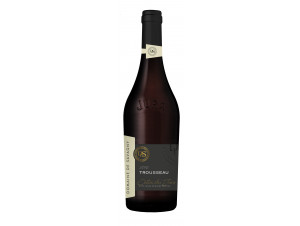











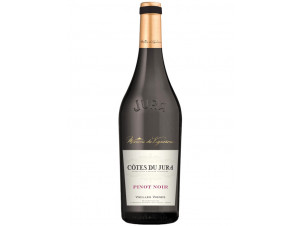






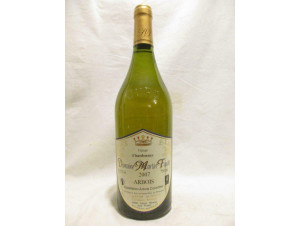
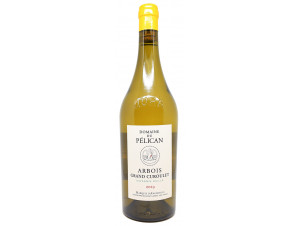
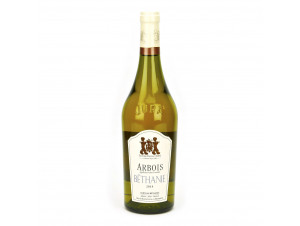

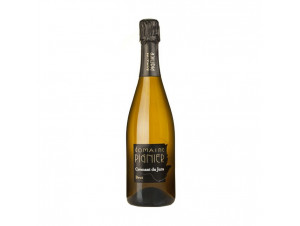


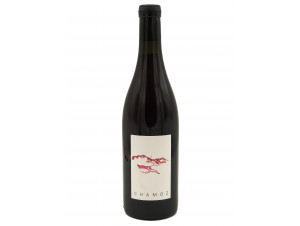




 TWIL - Achat de Vin
TWIL - Achat de Vin


